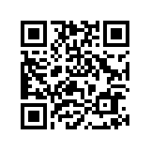【專題:華語文教學研究】華裔兒童文化教材主題選取之探討以美加東地區中文學校教師之需求為例
作者:蕭惠貞(國立臺灣師範大學華語文教學系暨研究所副教授)
卷期:59卷第2期
日期:2014年9月
頁碼:1-34
DOI:10.6210/JNTNULL.2014.59(2).01
摘要:
本研究主要從海外中文學校教師教導華裔兒童之教學需求,來探究文化教材的三大方面:主題選取、主題排序及文化教材應具有之特色。研究方法包括文獻探討、教材分析及問卷調查法。本研究首先探討文獻中的兒童華語文化教材主題,接著針對現有海內、外四本兒童教材中的主題進行歸類分析,並通過網路對美加東地區現任海外中文學校華語教師進行線上問卷調查,瞭解他們對於文化主題作為教學內容順序安排上的考量及意見。
研究結果顯示:一、兒童教材中的文化主題宜多以兒童生活相關題材為主,如「家庭」、「學校」、「人際關係」等;二、海外中文學校教師認為文化教材中最應優先考慮的主題為「傳統節慶」、「傳統藝術」、「民俗童玩」及「童謠」,此與現有教材之涵蓋內容不盡相同;三、在主題選取與排序方面,海外實際教學使用之優先考量的因素則為「教材內容的難易度」和「學生的語言程度」、「節日時程配合」及「教材資源的取得是否容易」。研究分析出海外教學宜增加實際「動手做」的主題,以引起學習者的興趣,讓教學效果更好。最後,教材評估與實際教學需求的差異呈現極大差距,反映出文化主題內涵及界定的落差問題。
關鍵詞:文化、文化教材、主題排序、教材編寫、華裔兒童
 《詳全文》
《詳全文》

Journal directory listing - Volume 59 (2014) - Journal of NTNU: Linguistics & Literature【59(2)】September (Special Issue: Research on Chinese Language Teaching and Learning)
【Special issue: Research on Chinese Language Teaching and Learning】Culturally Related Theme Selection in Chinese Text Materials for Heritage Learners: A Case Study on the Needs of Local Chinese School Teachers
Author: Huichen S. Hsiao (Department of Chinese as a Second Language, National Taiwan Normal University)
Vol.&No.:Vol. 59, No. 2
Date:September 2014
Pages:1-34
DOI:10.6210/JNTNULL.2014.59(2).01
Abstract:
This study investigated the selection of cultural themes in commonly used textbooks in North America, aiming to determine the sequencing order of the cultural themes suitable for heritage learners (children aged 7 to 12 years). I am focused on the common cultural topics introduced in current textbooks, and whether the arrangement of these themes is sufficient to cover the comprehensible cultural elements (the so-called “big C” and “small c”). I analyzed four textbooks and compared the results with an online questionnaire on the needs of teachers for understanding the existing gap, to propose a reasonable theme sequence for learners and teachers.
This study involved 30 experienced teachers who taught Chinese at local Chinese schools in the Eastern United States and Canada during 2010-2011. The findings of this study contribute to the field of cultural material compilations regarding heritage learners at local Chinese schools in three ways: 1. by providing evidence that the top three themes in textbooks are “family, school, and human relations”; 2. by demonstrating that the needs and opinions of teachers regarding theme selection are quite different from the themes found in text materials (e.g., festivals, traditional handicrafts and arts, folklore, and nursery rhymes); and 3. by showing that the primary factors that overseas teachers emphasize are “the degree of difficulty of text materials, as well as the language level of the students,” “the natural occurring order of Chinese festivals,” and “the accessibility of teaching materials.” Finally, this study demonstrated the importance of the “learning-by-doing” principle, by concluding that the compilation and selection of cultural themes should be interesting and related to the lives of learners, allowing students to practice what they learn. Nevertheless, the divergence between text materials and practical teaching needs reflect the gap that exists when defining cultural themes in textbooks.
Keywords:culture, cultural teaching materials, theme arrangement, material compilation, heritage learners